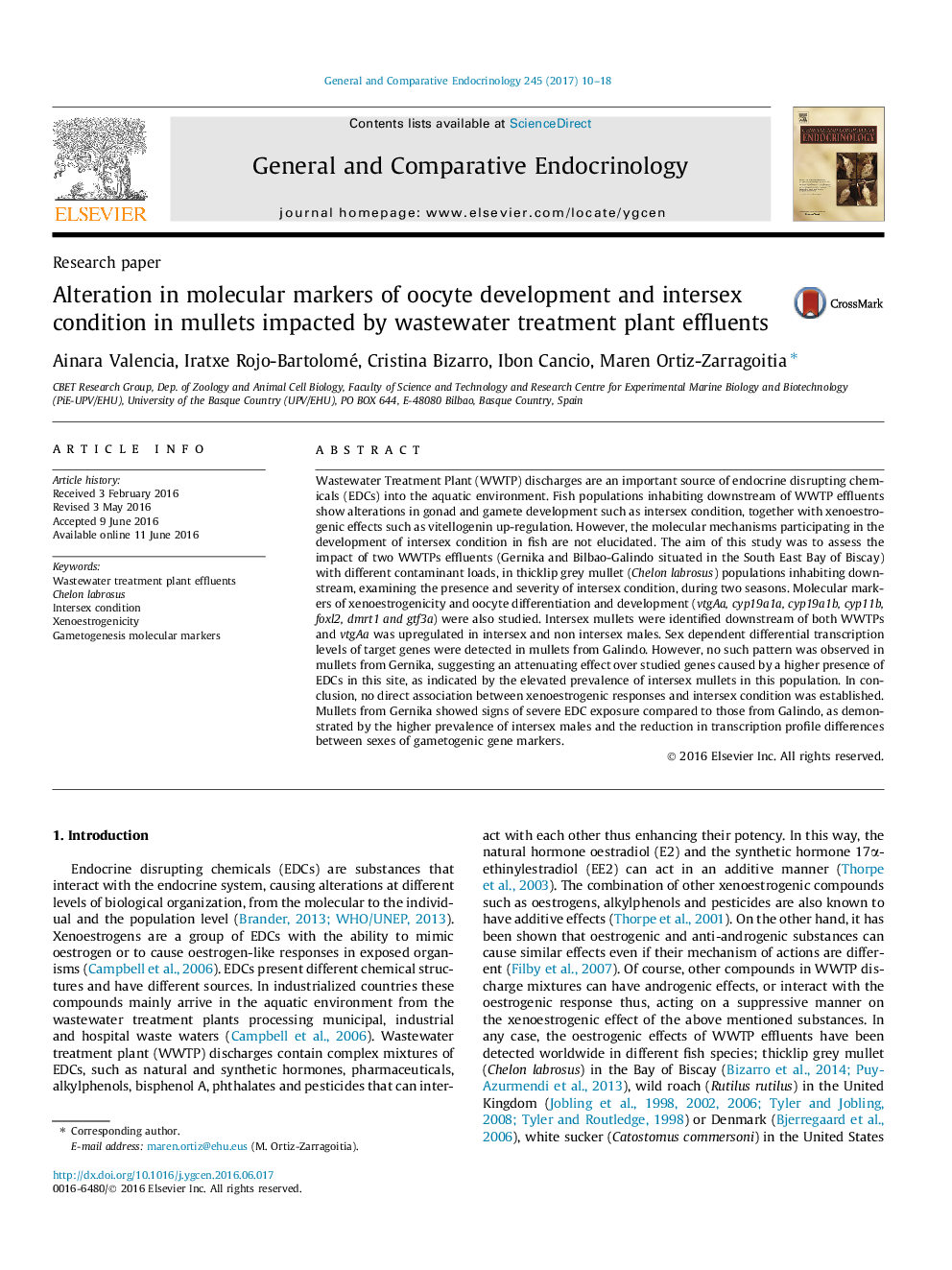| Article ID | Journal | Published Year | Pages | File Type |
|---|---|---|---|---|
| 5587612 | General and Comparative Endocrinology | 2017 | 9 Pages |
â¢Intersex mullets were described in two populations inhabiting downstream WWTPs.â¢Up-regulation of vtga was detected in both mullet populations.â¢Transcription of sex related genes showed impaired gametogenesis in mullets from Gernika.â¢Xenoestrogenicity and exposure to EDCs was demonstrated in both mullet populations.
Wastewater Treatment Plant (WWTP) discharges are an important source of endocrine disrupting chemicals (EDCs) into the aquatic environment. Fish populations inhabiting downstream of WWTP effluents show alterations in gonad and gamete development such as intersex condition, together with xenoestrogenic effects such as vitellogenin up-regulation. However, the molecular mechanisms participating in the development of intersex condition in fish are not elucidated. The aim of this study was to assess the impact of two WWTPs effluents (Gernika and Bilbao-Galindo situated in the South East Bay of Biscay) with different contaminant loads, in thicklip grey mullet (Chelon labrosus) populations inhabiting downstream, examining the presence and severity of intersex condition, during two seasons. Molecular markers of xenoestrogenicity and oocyte differentiation and development (vtgAa, cyp19a1a, cyp19a1b, cyp11b, foxl2, dmrt1 and gtf3a) were also studied. Intersex mullets were identified downstream of both WWTPs and vtgAa was upregulated in intersex and non intersex males. Sex dependent differential transcription levels of target genes were detected in mullets from Galindo. However, no such pattern was observed in mullets from Gernika, suggesting an attenuating effect over studied genes caused by a higher presence of EDCs in this site, as indicated by the elevated prevalence of intersex mullets in this population. In conclusion, no direct association between xenoestrogenic responses and intersex condition was established. Mullets from Gernika showed signs of severe EDC exposure compared to those from Galindo, as demonstrated by the higher prevalence of intersex males and the reduction in transcription profile differences between sexes of gametogenic gene markers.
